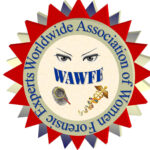Mimicking Transfer and Persistence of Trace DNA
Home » Mimicking Transfer and Persistence of Trace DNA
- Session
Mimicking Transfer and Persistence of Trace DNA
- September 27, 2018 //
- 9:00 am -
- 9:20 am //
- North Ballroom
The true origin of contamination events can rarely, if ever, be truly determined as nucleated cells and DNA molecules, akin to bacteria cells and viruses are invisible to the naked eye due to their microscopic nature.
Contamination incidents in forensic laboratories result in quality investigations, increased labour, higher costs, poor customer service, injustice for complainants, and have the potential to render valuable irreplaceable casework samples invalid.
This project aimed to elucidate contamination mechanisms, areas prone to contamination build-up and highlight items most susceptible to the transfer of contamination events. To elucidate these contamination pathways that may or may not be created during forensic examinations an invisible UV fluorescent marker was employed to monitor and track contamination within a lab environment during forensic examinations. Being able to visualise these pathways will also provide an insight into possible mechanisms for contamination events. Being able to identify contamination pathways and areas of possible deficiencies in processes and procedures allows us to improve our procedures, the quality of casework output and provides a better level of service to the client and the community.
The true origin of contamination events can rarely, if ever, be truly determined as nucleated cells and DNA molecules, akin to bacteria cells and viruses are invisible to the naked eye due to their microscopic nature.
Contamination incidents in forensic laboratories result in quality investigations, increased labour, higher costs, poor customer service, injustice for complainants, and have the potential to render valuable irreplaceable casework samples invalid.
This project aimed to elucidate contamination mechanisms, areas prone to contamination build-up and highlight items most susceptible to the transfer of contamination events. To elucidate these contamination pathways that may or may not be created during forensic examinations an invisible UV fluorescent marker was employed to monitor and track contamination within a lab environment during forensic examinations. Being able to visualise these pathways will also provide an insight into possible mechanisms for contamination events. Being able to identify contamination pathways and areas of possible deficiencies in processes and procedures allows us to improve our procedures, the quality of casework output and provides a better level of service to the client and the community.
- Early Registration
- $250.00
- Standard Registration (after July 15)
- $295.00
- Student Registration$195.00
- $195.00
Workshop currently at capacity. A waitlist is available to join on our registration page.


